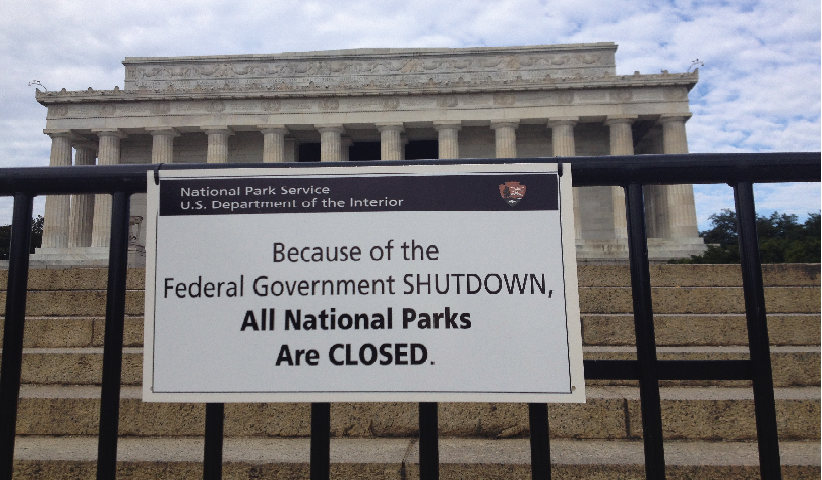Last Friday marked the end of the longest government shutdown in U.S. history. After 35 days of little to not funding for a portion of the government, the stalemate ended when President Trump signaled he would sign a temporary budget bill without border wall funds. By the end of the day, the House and the Senate sent the funding bill to Trump’s desk to be signed, restoring work and pay for the nearly 800,000 federal employees affected by the shutdown across all 50 states. The funding is only for three weeks, and President Trump has indicated that he will shut down the government again if there is no funding for a wall by the end of the three week stop-gap. Fighting over the border wall has been an issue throughout Trump’s first two years in office, but it escalated greatly in the months leading up to the midterm election. It resulted in Democrats gaining control of the House of Representatives for the first time since 2010, while Republicans increased their majority in the Senate.
By the end of December, the Senate unanimously passed the final spending bill, without border wall money, for a vote in the House of Representatives scheduled for the following days. Before a vote in the House where the funding bill was expected to easily pass, Trump signaled he would not sign any deal without border wall funding, forcing negotiations over government funding to restart, thus leading to the start of the government shutdown. After new lawmakers were sworn in on Jan. 3, funding negotiations between Democrats and Republicans continued. The biggest barrier to passing any funding bill is the Senate, where 60 votes are required to pass any bills. Various funding bills were brought up during the last month, both including and not including border wall funding, but none of the proposals could pass.
The funding process usually starts with the president submitting his budget proposal to congress. This works mostly as a guideline for Congress to work off of, with the legislative branch even deciding it could ignore entire sections of the president’s requests. Spending bills are supposed to be passed in chunks, with individual sections of government being funded rather than the entire budget in being passed in one spending bill. However, this is rarely the case. The 2018 end-of-year spending bill was composed of multiple sections of government, lumped together after a few agencies had their budgets passed in previous funding bills earlier in the year. Nine agencies have yet to fully be allocated funding for the next fiscal year, including the Departments of Homeland Security, Justice, Agriculture, Treasury, State, Interior, Transportation, Commerce, HUD, as well other government organizations like NASA and the IRS.
Public opinion on shutting down the government over a border wall has showed that the majority of Americans oppose this. An ABC/Washington Post poll taken during the middle of January showed that 42% of Americans support a border wall while 54% oppose one. Last Friday, The Oredigger ran an anonymous-response poll gaging student responses to the shutdown in the Daily Blast. Nearly 200 Mines students responded, and the results leaned heavily one way. 84% of those surveyed did not support shutting down the government over a border wall while 11% supported this. When asked if their opinion remained the same without shutting down the government, 76% said they would not support a border wall while 18% said they would. Nearly one third (31%) of those surveyed said they were personally affected by the government shutdown in some form, while 59% claimed that a friend or family member was affected. This survey was meant to provide a snapshot of the Mines student body and is not weighted in any way.
Students had a variety of topics to say regarding how the shutdown has affected them and who should shoulder the blame.
“As a government employee, I have personally been affected by this shutdown and missed two paychecks,” a graduate student says. “Government employees cannot be held hostage to the whim of whatever party/president is in power. Otherwise, this will be something that every president attempts to do.”
Another graduate student detailed the harm the shutdown has caused the science community. “Research funded by some federal grants are not able to make use of any funds. Not only is this shutdown hurting families, it is doing long term damage to our economy and hampering research which once made us the most innovative country in the world.”
Not all students viewed the shutdown as a negative.
“The vast majority of the government should stay shut down forever,” wrote one junior in mechanical engineering.
A senior wrote that “watching the back and forth between Pelosi and Trump has forced [him] to conclude that we are being governed by 2 year olds.”
Although the government has now been operational since Friday, in less than three weeks funding will again run out for most government agencies. Without another border wall deal, as President Trump has required to prevent another shutdown, it appears that we will likely end up in the same place we were in before.



'Government shutdown temporarily ends' has no comments
Be the first to comment this post!